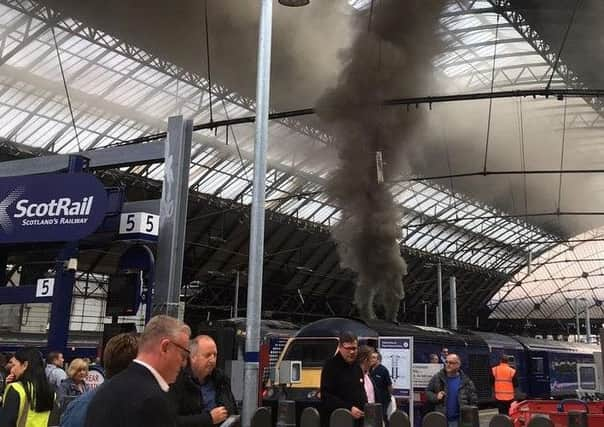ScotRail’s new ‘museum piece’ trains may be about to be banned – Alastair Dalton


They are regarded as a design classic, have been in service on Britain’s railways for 43 years and at least one is now heading for a museum.
But while many operators are withdrawing their veteran InterCity 125 High Speed Trains to replace them with brand new models, ScotRail is giving them a new lease of life.
Advertisement
Hide AdAdvertisement
Hide AdWhile the firm is sending a fleet acquired from the west of England to be refurbished, in stark contrast, dozens of other HSTs are piling up in storage sidings.
Those which have operated between Aberdeen, Inverness and London for decades, currently by LNER, may join them.
Eyebrows were raised when ScotRail operator Abellio announced its choice for inter-city routes five years ago, but backers have said they are Britain’s most successful trains and a firm favourite with passengers.
For those sick of being jammed into ScotRail’s previous trains on the Edinburgh/Glasgow-Aberdeen/Inverness lines, they provide both more carriages and more legroom, plus a potentially smoother ride with the engine at one end rather than under the floor.
But ScotRail’s introduction of the trains has been a catalogue of woe that has eclipsed the usual teething troubles that every new train seems to experience, however many times we’re assured they will work “out of the box”.
Tuesday’s rush-hour evacuation of Queen Street Station in Glasgow after excess smoke emissions from an HST triggered fire alarms is just the latest of a series of headaches they have caused ScotRail.
ScotRail admits similar exhaust levels may also be being pumped out from the trains en route, but they don’t set off alarms.
The trains’ engines are understood to have been replaced ten to 15 years ago.
Advertisement
Hide AdAdvertisement
Hide AdOlder passengers joke that the company has effectively returned to the Steam Age, but that won’t raise a smile among those forced to breathe the smoke produced by the HSTs as they power up the tunnel out of Queen Street – which is then sucked into the air-conditioning of ScotRail’s brand-new “greener” electric trains which share the line.
But the main problem ScotRail has faced with the HSTs is the difficulties encountered in overhauling them to meet current standards.
I’m told every coach was built slightly differently, causing a nightmare for the installation of electric sliding doors by contractor Wabtec. Such problems have put back the programme about a year, with only five of the 26 trains yet completed. The rest are expected to take until next year to be finished.
As a consequence, ScotRail has been forced to press into service a dozen trains still in their “classic” state to cover new services from last December.
Videos have had to be made to remind passengers how to use the old-fashioned “slam” doors while staff have undergone an unplanned additional round of training.
More significantly, a potential deadline of the end of the year looms, when such “classic” trains face being banned because they are not fully accessible for disabled passengers, and their toilets still flush onto the tracks.
In the wake of this week’s incident, questions have been raised as to whether the HSTs were a bad buy. But it’s too late for that now, although you’d think a brand-new train wouldn’t have run into quite so many difficulties.
Even so, the trains unfortunately don’t sit well with the Scottish Government’s current climate emergency – which itself must not be a temporary political fad.